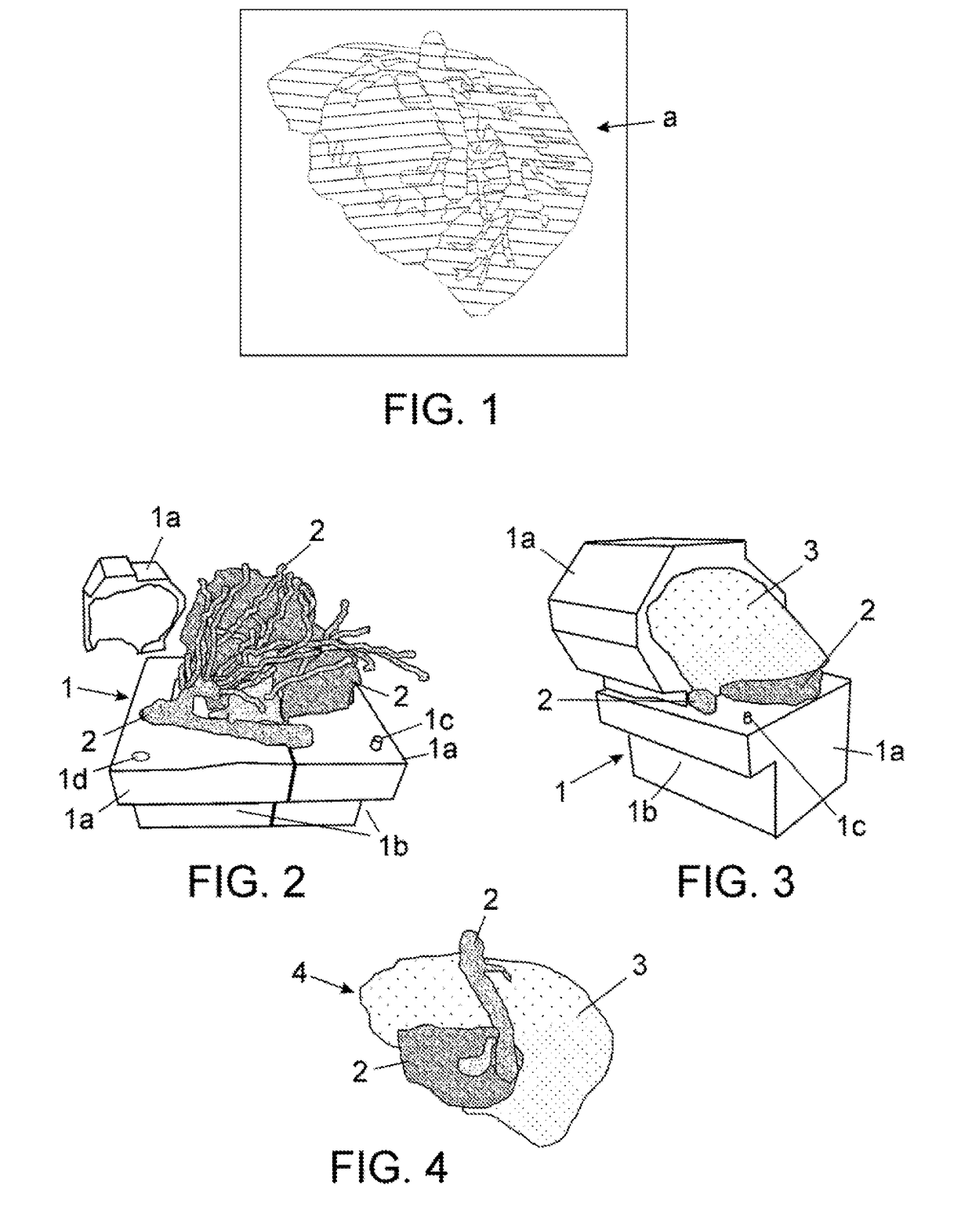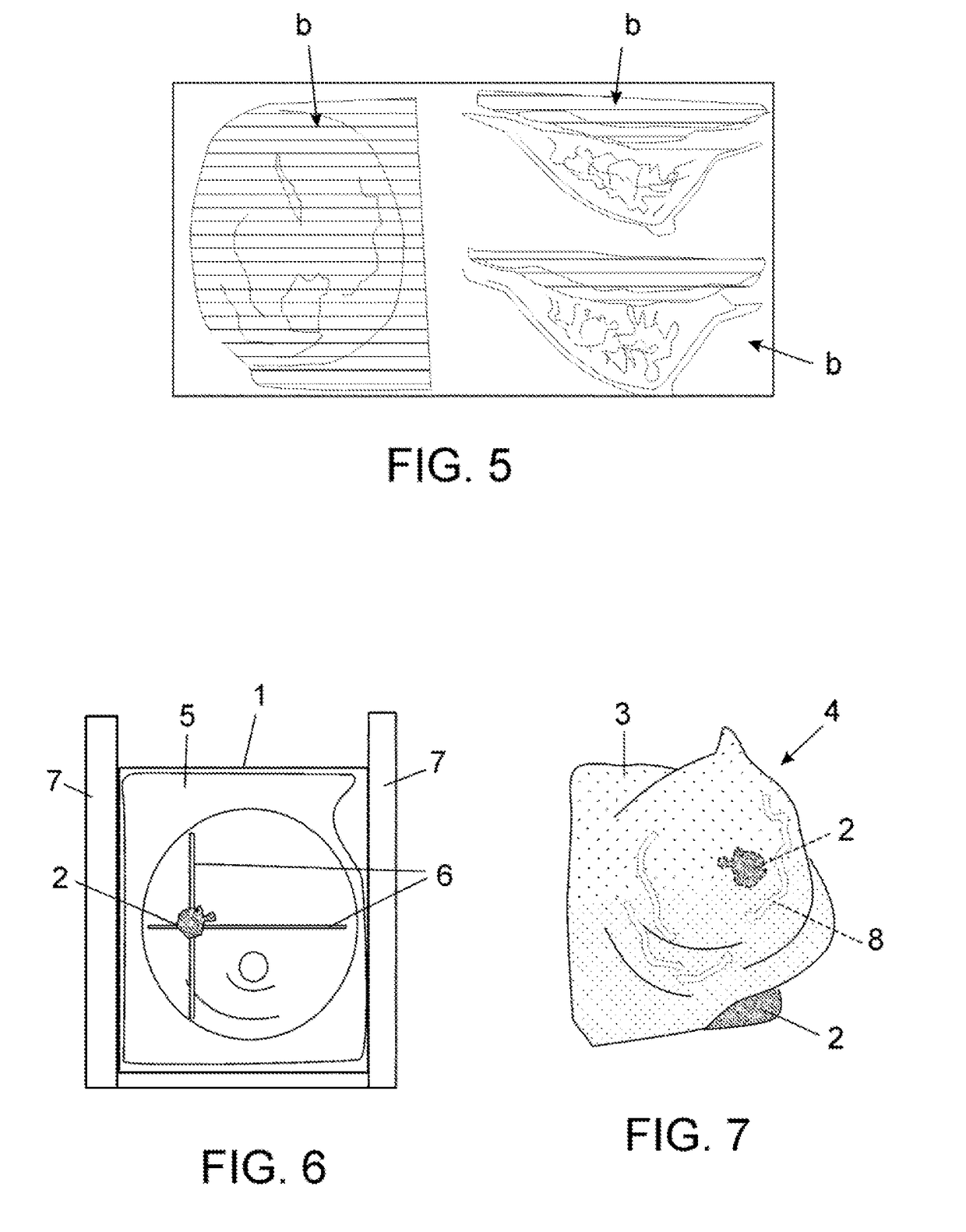Method for producing anatomical models and models obtained
a technology of anatomical models and models, applied in the field of medicine, can solve the problems of limiting the production of soft organ models, -hardness limitations of rigid 3d printing materials, and -inability to produce anatomical models of soft organs such as livers or breasts, and achieve the effect of ensuring the consistency of the actual organ
- Summary
- Abstract
- Description
- Claims
- Application Information
AI Technical Summary
Benefits of technology
Problems solved by technology
Method used
Image
Examples
Embodiment Construction
[0031]In view of the aforementioned figures, and according to their numbering, a non-limiting exemplary embodiment of the method for the manufacture of anatomical liver models (A) and breast (B) can be seen, which comprises the following:
Example (A) for Anatomical Models of Liver
[0032]The method of making anatomical models of liver comprises, in the first stage, obtaining information about the patient's liver by an image diagnosis such as a CAT (Computerized Axial Tomography) with or without vascular reconstruction, NMR (Nuclear Magnetic Resonance), Echography, Cholangiography or the like.
[0033]Next, in a second stage, specialized software has been developed for selecting (segmenting) automatically different elements of the organ; in particular, the following elements in the images obtained: the liver parenchyma, hepatic-biliary vasculature differentiating each of the elements and tumor (when appropriate). It will be apparent that other programs known to those skilled in the art may...
PUM
 Login to View More
Login to View More Abstract
Description
Claims
Application Information
 Login to View More
Login to View More - Generate Ideas
- Intellectual Property
- Life Sciences
- Materials
- Tech Scout
- Unparalleled Data Quality
- Higher Quality Content
- 60% Fewer Hallucinations
Browse by: Latest US Patents, China's latest patents, Technical Efficacy Thesaurus, Application Domain, Technology Topic, Popular Technical Reports.
© 2025 PatSnap. All rights reserved.Legal|Privacy policy|Modern Slavery Act Transparency Statement|Sitemap|About US| Contact US: help@patsnap.com


